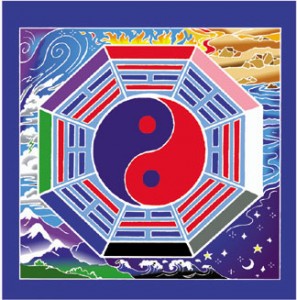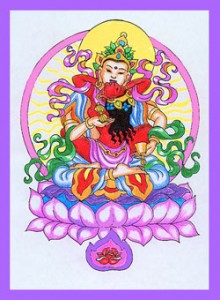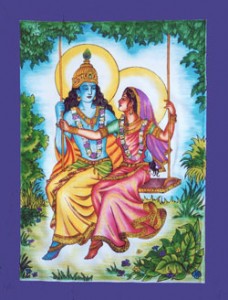 The word “Tantra” is used to mean many things—usually having some association with sexuality. Yet Tantra is so much more than that.
The word “Tantra” is used to mean many things—usually having some association with sexuality. Yet Tantra is so much more than that.
“SACRED SEXUALITY brings greater intimacy and love into our relationships.”
To truly understand Tantra, I recommend looking to its origins. That takes us back to India and Tibet nearly 2,000 years ago, where Tantra was developed as an advanced spiritual practice. At that time, serious spiritual practice was generally restricted to men in the priest caste who dedicated themselves to the practice of meditation, as well as renunciation of “worldly” attachments. This was supported by a monastic lifestyle, including rigorous restrictions relative to money, food, and sex.
Within that context, Tantra was employed as a kind of finishing school for enlightenment. Once an aspirant had attained a high level of mastery in meditation and discipline of the body-mind, his teacher might have him begin practicing Tantra. The monk would then engage in practices (under the teacher’s direct supervision) that were seemingly the polar opposite of his previous instructions. These practices involved elaborate rituals utilizing very “worldly” things, such as drinking alcohol, feasting on meat and other previously-forbidden foods, meditating in graveyards, and engaging in sexuality with a consort from the “untouchable” caste (chosen by the teacher).
The idea behind these apparently “non-spiritual” acts was to test and grow the practitioner until he could stably bring the realization he had achieved through meditation and abstinence into all the ordinary domains of life, thus achieving full realization in all realms. Tantra (which translates as “weaving” or “expansion”) was actually about expanding the aspirant’s realization by weaving together the spiritual and the earthly, to the point of total union or oneness.
This concept of weaving of seeming opposites is central to Tantra. It is through this weaving that one can experience union and ultimate liberation. In Tantra, there is a fundamental understanding that the Divine itself is ultimately realized through inclusion or holding of ALL that is, including all apparent polarities (e.g. transcendence and immersion in life, self-realization and devotion to others, equanimity and action, surrender and engaging the will, etc.) The Tantric image of God and Goddess in union is an icon for this weaving of polarities.
Sexuality is a unique and powerful vehicle for experiencing the embrace of consciousness and energy.
Let’s take a closer look at this God-Goddess stuff. In Tantra, God (also called Shiva or the Divine Masculine) refers to transcendental consciousness. The domain of Shiva is understood to be that which is un-manifest—prior to space, time, and all arising. It is the state that people generally seek to connect with through meditation, which has been described as peace, stillness, emptiness, spaciousness, pure awareness, liberation, nirvana, and the witness consciousness.
By contrast, the Goddess (also called Shakti or the Divine Feminine) refers to the energy of manifestation. It’s the creative force of nature (sometimes called Divine Mother) and the cycle of birth-life-death-rebirth. In the spiritual arena, Shakti may be experienced as radiance, bliss, fullness, heart-opening, visions or sounds, and light. It may also be experienced as change, movement, purification, and disintegration. In its purest form, the Divine Feminine is the energy of love.
The Tantric view of the Divine is that it’s Shiva-Shakti, or the union of the Divine Feminine and Masculine. It’s the Masculine, ever-still, presence of consciousness fusing with the Feminine, in-motion, energy of life and love. Ultimately it’s an alchemical recipe for unity and oneness.
So what’s all this got to do with sex? Well, to begin with, Shiva and Shakti are a couple of pretty hot lovers, in a very cosmic sense. So we’re talking about a very juicy view of the Divine. As a matter of fact, Shiva and Shakti are often visually represented in sexual embrace, as a symbolic communication of the nature of the universe. In other words, everything that exists, every moment in time, can be understood as Shiva-Shakti, or the play of consciousness and energy. (You might visualize the yin yang symbol as another representation of this.)
That’s not just an abstract concept. In Tantra, you (and everyone) are related to as the Divine Feminine and Masculine. This is often expressed as “seeing the God and Goddess within.” As we reconnect with these aspects of ourselves, we often see striking changes in our participation in life, including our sexuality.
But that’s just the beginning of what links Tantra with sexuality. Tantra views sexuality as the microcosm that reflects the macrocosm. Because of this, sexuality is a unique and powerful vehicle for experiencing the embrace of consciousness and energy. In Tantra, there are sexual practices that guide the participants into unity and oneness, both within oneself, with one’s partner, and with the Divine. I call this aspect of Tantra “sacred sexuality” (to differentiate it from the broader spectrum of Tantra) and it’s a profoundly transformative practice of ecstasy—integrating body, heart, mind, and soul and opening us to higher dimensions of reality.
By expanding our capacity for feeling and being present with an intimate, sacred sexuality brings greater intimacy and love into our relationships. It also grows our ability to give and receive sexual energy, so most people experience a dramatic increase in their sexual pleasure and aliveness. However, this sexual energy isn’t confined to the genitals. It’s redirected to the entire body and all the chakras, with powerful results for our whole-body energy, health, and spiritual expansion.
And last, but certainly not least, sacred sexuality is a powerful tool for healing. Many of us have experienced sexual shame and wounding, which is stored in our cellular memory. This may range from obvious incidents of sexual trauma, to a vague or pervasive sense of sex as secretive, dirty, sinful, or wrong. Sacred sexuality is a potent means for releasing emotional and sexual blocks and wounds, and through that returning to a life-positive orientation of celebrating our sexuality and reclaiming its highest potential.
To learn more about Tantra and sacred sexuality:
- Read SUBLIME UNION: A WOMAN’S SEXUAL ODYSSEY GUIDED BY MARY MAGDALENEby Mercedes Kirkel. Learn more and order the book at sublime-union.com.
Copyright 2014, Mercedes Kirkel, mercedeskirkel.com. The following illustrations on this page are courtesy of Karuna Arts (karunaarts.com): Yin Yang Palanquin, Shakti Dancing, Yab Yum, Krishna Radha.




